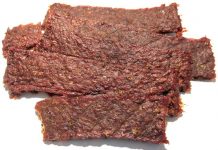
Don’t throw it out! Biogas generators are one of mankind’s most accessible energy inventions. Organic compounds – even wasteful ones like kitchen scraps and cow manure – can be used to create biogas, and a proper generator can turn that biogas into electricity. The energy conversion process is extraordinarily efficient and biogas generators can be built at home and used by anyone.
Continue below to learn more about biogas electric generators, including how they work, why they’re used so frequently by homeowners, farmers and survivalists, and how to build your own today.
Biogas generator: What It Is, Why It Works
A biogas generator is an energy-efficient way to turn the waste you generate into fuel. You can use waste like kitchen scraps for small biogas generators, or a higher-energy source like cow manure for practical energy applications (like sending electricity to your home).
According to Abel Thomas, author of the Liberty Generator, the process from waste to energy is fairly simple to understand even for non-technically minded people. Everything begins with your source of fuel. That source is combined with anaerobic bacteria and anaerobic digestion takes place. Anaerobic digestion releases gases like methane and hydrogen.
Those gases are then fed into the gas holder through a pressurized tube. The pressure of the tube allows gases to flow from the gas holder to the spigot, where you harness them for energy applications. Gas holders are airtight to ensure that none of the valuable gases created by anaerobic digestion are released.
In summary…
Waste decomposes and turns into gas
Your biogas system contains the gas until you are ready to use it
You use the gas in a controlled flow from the spigot – or, generators automatically turn the biogas into electricity
No special tools or technologies are required! Everything is natural.
Why Build a Biogas Generator?
The real question is: Why didn’t you do it already? Biogas generators are cheap and easy to build, and they allow you to extract electricity from household or farm waste. Without a generator, you’re letting your waste go to waste!
Lower energy bills
It’s estimated that certain villages in India supply 25% to 50% of their cooking energy needs with biogas conversion. Biogas can be used to save on energy costs, or provide energy where traditional sources are scarce. Generators are extremely popular with the survivalist crowd for this reason – they are a way to generate electrical energy without relying on “the grid”. In the meantime, while the grid is still up, you will pay less for electricity on a monthly basis.
Extracting energy from farm products
You can use other waste products for substantial energy production, too. A single cow will produce enough manure to generate just under 200 cubic feet of biogas per day. Even low-energy waste products like grass clippings can be used – for example, with an efficient biogas generator system, a pound of grass clippings can equal up to or over a pound of biogas. How much energy you generate will depend on the efficiency of your generator – the video at the end of this page covers how to build an electric generator at home with close to 100% efficiency.
Create a rich fertilizer from waste
Biogas can be turned into rich fertilizer easily. It’s very common for farmers to use manure from their animals to create biogas and fertilize their crops. This explains why you sometime see (and smell) big piles of manure near farms – the manure is waiting to be processed into biogas.
Overall, though, the most common at-home use for biogas generators is electricity – even a small biogas generator can help you save big on utility bills, and if anything ever happens, you have a guaranteed source of electricity to fall back on.
How to build a biogas electric generator
The good news is that biogas electric generators are easy to build. High school students build them as casual science projects. You can build one for your personal energy needs even if you’re not particularly “good with your hands”.
- Choose a container for your digester tank. Your waste will be put here.
- Choose a container for a gas holder tank. Your final product will appear here.
- Connect the digester tank and gas holder with inlet and outlet pipes. The pipes you use should be heat-resistant to guarantee a pure final product.
- Find a source of decomposition. Flame sources are popular for at-home application to move from waste to energy quickly.
If you are building a biogas electric generator for practical energy purposes, you may want to follow a professional guide for the best results. Survivalists and farmers can click below for a step-by-step introduction to practical biogas generators and how they are built.
Start here…
Even if you do it the professional way (which we recommend), building a biogas electric generator is still very easy to do. You can have yours running and turning your waste into electricity in just a few hours from now. Watch the video below to get started.








